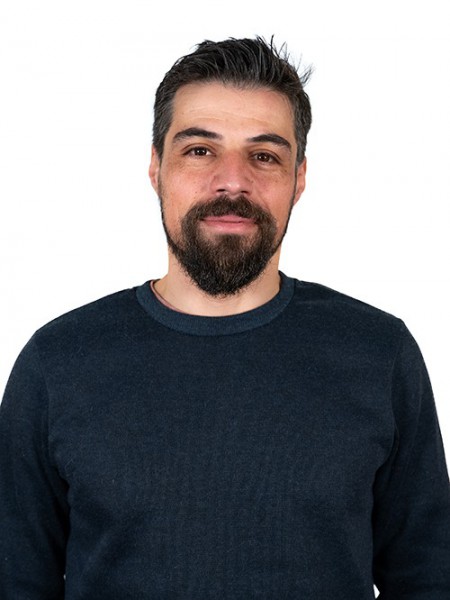resumo
Although relevant from the clinical point of view, radiotracers targeting cationic amino acid transporters are relatively unexplored and, in particular, no metal-based radiotracers are known. The rare examples of complexes recognized by amino acid transporters, namely by the Na+-independent neutral L-type amino acid transporter 1 (LAT1), are Tc-99m(I)/Re(I) compounds. Herein, we describe conjugates comprising a pyrazolyl-diamine chelating unit and the cationic amino acid L-arginine (L-Arg) linked by a propyl (L-1) or hexyl linker (L-2),which allowed the preparation of stable complexes of the type fac-[Tc-99m(CO) 3(k(3)-L)]+ (Tc1, L = L-1; Tc2, L = L-2) and of the respective surrogates Re1 and Re2. Interestingly, complex Tc2 exhibited moderate levels of time-dependent internalization in three human tumoural cell lines, with approximately 3% of total applied activity internalized, corresponding to 21% of the cell-associated activity. A putative mechanism of retention in the cytoplasm of cells could be the interaction of the complex with inducible nitric oxide synthase (iNOS), which is the enzyme responsible for the catalytic oxidation of L-Arg to citrulline and nitric oxide. However, the surrogate complex Re2 does not recognize iNOS, as demonstrated by the in vitro assays with purified iNOS and in studies with lipopolysaccharide(LPS)-activated macrophages. Preliminary mechanistic studies suggest that the internalization of Tc2 is linked to the cationic amino acid transporters, namely system y(+). This finding might open the way towards the development of novel families of metal-based radiotracers for probing metabolically active cancer cells.
palavras-chave
NITRIC-OXIDE SYNTHASE; POSITRON-EMISSION-TOMOGRAPHY; ATB(0,+) SLC6A14; UP-REGULATION; CANCER; INHIBITION; PROTEIN; AGENTS; ASSAYS; RE
categoria
Chemistry
autores
Morais, M; Ferreira, VFC; Figueira, F; Mendes, F; Raposinho, P; Santos, I; Oliveira, BL; Correia, JDG
nossos autores
agradecimentos
This work has been partially supported by the Fundacao para a Ciencia e Tecnologia (FCT), Portugal, through the UID/Multi/04349/2013 project. V. F. C. F. thanks FCT for a PhD grant (SFRH/BD/108623/2015). Dr J. Marcalo is acknowledged for performing the ESI-MS analyses. The QITMS instrument was acquired with the support of Contract REDE/1503/REM/2005 - ITN of FCT and is part of RNEM.


